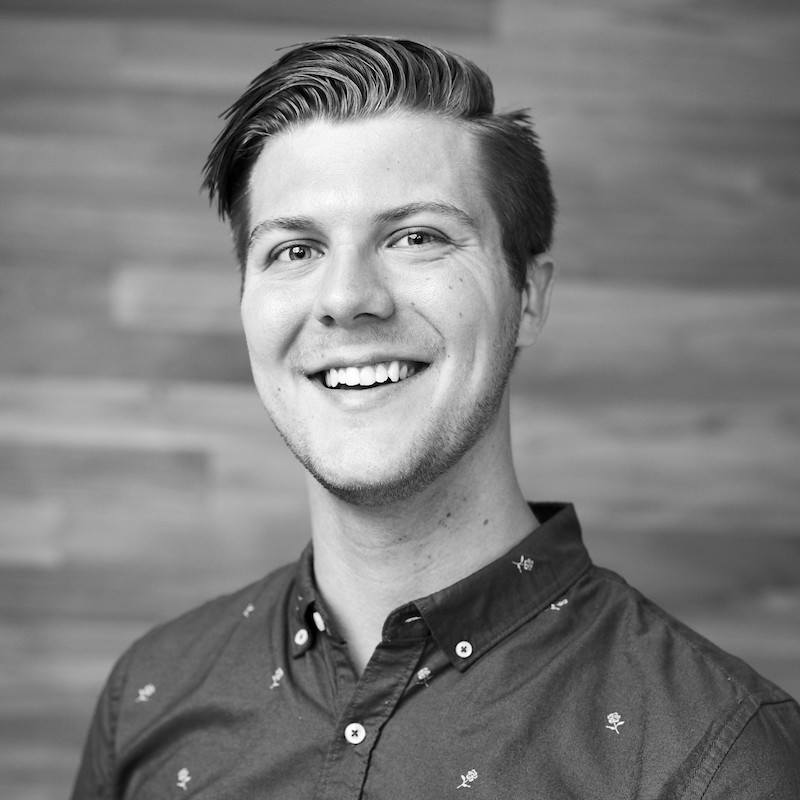Industry Design Project: ‘Hybrid Step Into the Real World’


Dominic Sylvester studied graphic design in college, but when he graduated he felt unprepared to actually begin a design career.
“They taught me how to use the pen tool in Illustrator, they taught me how to use Photoshop brushes, but they never taught me how to apply my work into the career world,” he said.
Springboard’s Industry Design Project (IDP), which matches students with companies in need of UX help, was the bridge between learning and working, Dom said.
“This project was, for me, the hybrid step into the real world,” he said, “because when I went to college they taught me the structure and principles of graphic design, like how to use it and everything, but they never taught me how to apply it into the real world.”
The IDP is a cornerstone of the UI/UX Career Track. Students are matched with a company to complete a 40-hour project that solves a real business problem.
Through this work, aspiring designers:
- Gain real-world experience collaborating with a design team or working directly with a client for four weeks
- Dive deeper into an area of the UX design process they’re interested in: competitive research, user research, usability testing, or redesign recommendations
- Distinguish themselves from other bootcamp graduates by building a personalized portfolio
The founding group of partner organizations include AngelHack, Berkeley SkyDeck, Alchemist Accelerator, and M12 (formerly Microsoft Ventures).
In Dom’s case, he was matched with Headnote, a payment platform for lawyers. After working with the company to define a problem he could help solve, Dom began creating an online support center.
Headnote had two sources of support for current and prospective clients: a chatbot and a phone number. But after looking through the chat logs, Dom realized that the most common issues could be resolved by the client—if there were additional support materials on the website.
At the end of his four weeks on the job, Dom had completed most of the design work, but the project hadn’t reached the testing or implementation stage. Recognizing an opportunity, he offered to take it the rest of the way home.
“I decided to shoot my shot,” Dom said. “I’m like: [they] really liked my work, I know that they don’t have any other designers at the moment… might as well try. What’s the worst they can say? No?”
They didn’t say no.
Dom continues to consult for Headnote and is applying what he learned both in college and at Springboard every day.

It’s particularly exciting given that his career transition began less than a year ago.
Dom was working as a desktop technician at his college, Montclair State University, but wanted to launch a career in UX design to make a bigger impact on people’s lives. “Being able to solve problems for other people and making their lives easier is something that brings me joy,” he said.
Attracted by Springboard’s emphasis on community, Dom enrolled in the UI/UX Design Bootcamp (before the UX Career Track was launched).
The experience was “fulfilling,” he said. Dom particularly enjoyed working with his “fantastic” mentors.
“Ciarda and Andre were always there for me and gave me guidance throughout the whole program,” he said. “They taught me how to break boundaries and challenge my creative process to better it.”
Related Read: What Does a UX Designer Do?
Get To Know Other Design Students
Pete Bruno
Product UX Designer at Service Management Group
Aisha Butt
UX Associate at Meta
Parker Konz
Visual Designer at Gorilla Group
For his capstone project, Dom designed EZ D&D, a mobile app that teaches novice Dungeons & Dragons players the main rules and concepts of the game through easy-to-understand tutorials. The tutorials are written as a short narrative to maintain the theme of D&D.
“The problem that I solved was taking the game’s massive learning curve for new players and breaking it down into a language easier for them to understand,” he said.
From the capstone project to the IDP, hands-on learning is the foundation of Springboard’s UX design courses. And Dom said that practical experience helped him immensely.
“I was able to make mistakes, I was able to get messy, and then pinpoint what I learned out of it,” he said. “Now that I’ve finished the course, I’m way more confident.”
(Find out more about Ciarda Henderson, Andre Martins, and other UX mentors here.)
Since you’re here
If you want to work in design, you can. It’s that simple. With our UX Design Course, you’ll launch your career in design in 9 months or less – guaranteed. Browse our free UX salary guide to see what you could be making





